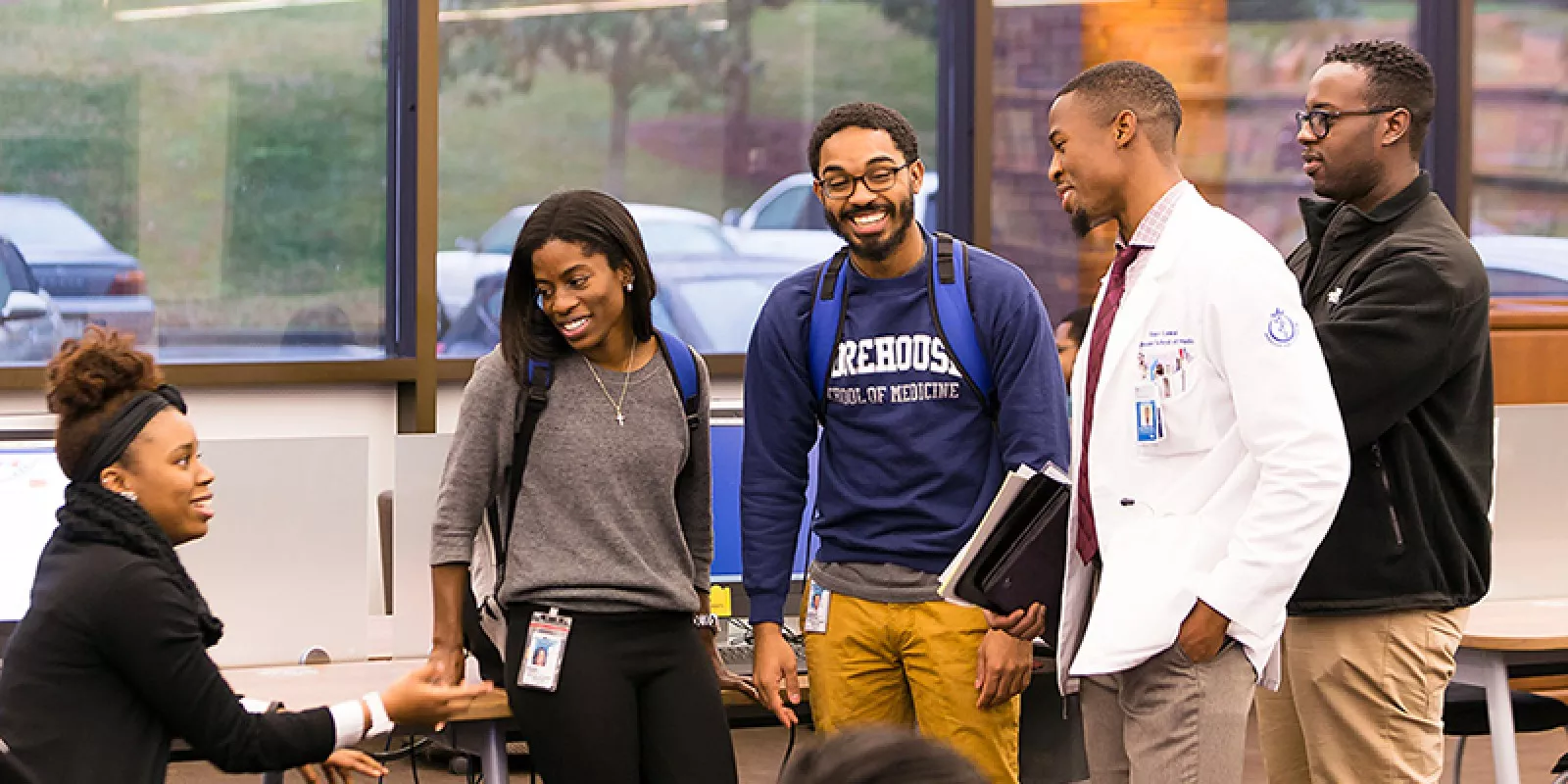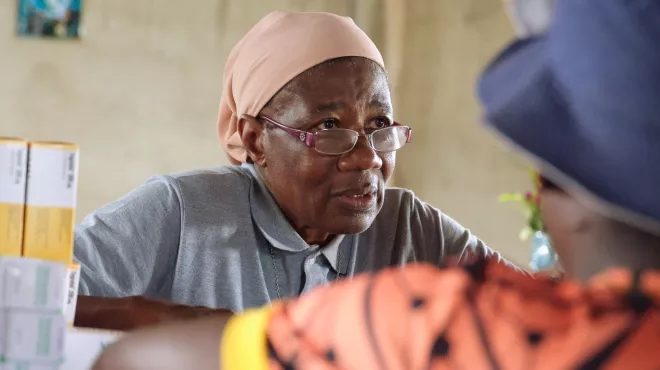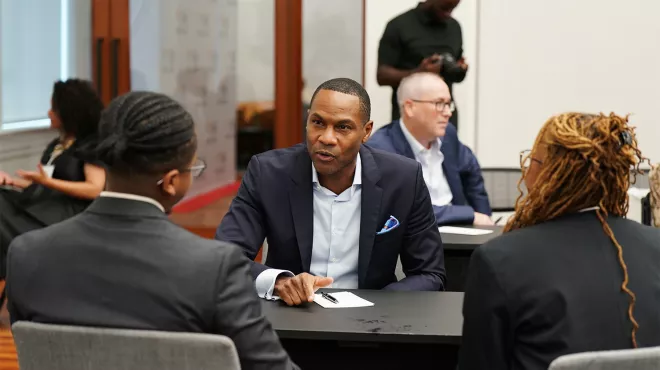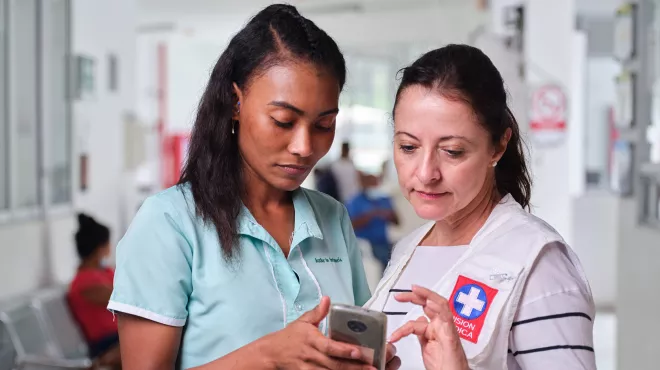Can a pharmaceutical company help close the racial healthcare gap in the US? Patrice Matchaba thinks so. His plans involve an initiative designed to bring about foundational change by tapping into the potential of underserved communities.
“We need to engage with the people whose problem we want to help solve, not create solutions for them,” says Matchaba, President of the Novartis US Foundation and Head of US Corporate Responsibility at Novartis.
Matchaba spent most of his two-decade career at Novartis steering experimental medicines through the drug development pipeline. He is now steering a pledge with Thurgood Marshall College Fund, Coursera, the National Medical Association, Morehouse School of Medicine and several other historically Black colleges, universities and medical schools to work together to build a diverse research and development talent pipeline in the US. The aim is to achieve a paradigm shift in education and health equity by working together with communities of color to co-create programs focused on increasing trust in the health care system through greater diversity, equity and inclusion across the research and development ecosystem.
Originally from Rhodesia (now Zimbabwe) in southern Africa, Matchaba was born into a segregated society. “There was absolute racism. No mixing,” he says.
He became a war refugee at 16. With funding from the United Nations, he studied chemistry and then medicine. His first medical practice was as a medical officer for a mine in the southern African country of Botswana, where he cared for many distressed young mothers who lived in the nearby Kalahari Desert. The experience inspired him to go on to develop a high-risk obstetrics practice in South Africa.
“I believe we go through things in life for a reason,” says Matchaba, who joined Novartis in 2000. “It's your ability to connect the dots that makes these events in your life meaningful.”
We spoke with Matchaba to learn more about his approach to helping solve health disparities.
You started your life and career in Africa and spent many years at Novartis focused on finding ways to improve access to medicine globally, in particular in low-income countries. Why are you now focused on the US?
I’ve felt for a long time that it was wrong to assume that the US was different from the rest of the world. That you don't have people of low income in the US. That you don't have people who, as a result of their low income or the color of their skin or their religion, are actually at a significant disadvantage when it comes to healthcare. The COVID-19 pandemic put those health disparities front and center.
Is part of the problem that clinical trials don’t include many Black participants?
It is important and we’re working on it. Everyone wants to talk about the number of patients in clinical trials, but we need to dig deeper. We know about Tuskegee. We know about Henrietta Lacks. We know the reasons for people of color not to trust the current healthcare system.
But do we know how many Black investigators are running industry-sponsored clinical trials mandated by the FDA (US Food and Drug Administration) for new drug applications in the US? I can tell you. In most trials, it's close to zero African Americans involved as investigators because there are so few Black clinical investigators.1 How do you solve the trust issue if you don't have investigators coming from that community?

The collaboration aims not only to increase clinical investigator diversity but also to create the next generation of Black leaders in health, science and technology. Where did this idea come from?
We talked to Dr. Valerie Montgomery Rice, the president and dean of Morehouse School of Medicine, to learn more about the root causes behind these gaps and how best to build trust of the healthcare system. She told us that Black students need support with STEM (science, technology, engineering and math) studies. Without support, those kids may never go to college, let alone medical school.
This was the beginning of the idea to create a 10-year plan to increase the support for students of color with scholarships and to work with historically Black colleges and medical schools to increase the number of Black healthcare professionals. This is about working together to change the whole community.
"We need diverse minds and diverse talent to come up with innovative and inclusive solutions."
Patrice Matchaba
Part of the program is to bring more people of color into the research and development of all kinds of technologies, not just medicine. Why is this part of the solution?
There were reports during the pandemic that pulse oximeters used to triage the sickest COVID patients might have misread blood oxygen levels of people with black and brown skin, potentially resulting in them being sent home from hospitals even though they were critically ill. When I learned this, I started digging and found that many data standards used in medicine have not included people of color. As a result, readouts can sometimes lead to worse health outcomes for people of color. We need to go through the whole system and rethink data standards and diagnostics. This is even more important now that the use of digital tools has grown during the pandemic.
We also need to be looking at diversity and inclusion in a different way. We need diverse minds and diverse talent to come up with innovative and inclusive solutions.
Why does it make sense for Novartis to support this effort to reduce disparities?
Most companies, not just pharmaceutical companies, view corporate responsibility as charity. When they're doing extremely well, they can give away medicines or whatever it is they have. This to me is not sustainable. Our thinking about innovation and access has evolved to become more focused on building a sustainable model that is driven by the kind of innovation that is only made possible by including diverse talents and their communities. This model is central to our core purpose to help solve the complex health challenges in society.
A force behind that evolution is that we're moving into new technologies like gene therapies and cell therapies, therapies that could significantly improve lives and potentially deliver cures. For low-income and middle-income countries, you have to start thinking early about their healthcare system's ability to absorb that new medicine. If you don’t, there's no way patients will ever benefit from those therapies.
Does that thinking apply in the US?
The US is in exactly the same position. You're not going to easily introduce gene therapies in rural communities, for example, if nobody understands them. Part of the solution is to have clinical investigators and participants in clinical trials that mirror the need that exists in the overall population, particularly for diseases that disproportionally affect Black people, like heart disease and sickle cell disease.
The link between what we have done in Africa and what we are doing now in the US is exactly the same thinking. We need to be inclusive, very early on, of all populations when developing new medicines.
What does success look like?
More kids from underserved communities going into STEM fields. More choosing to do research and development. More women and people of color as scientific investigators. More trust in a more inclusive health system.
And for me personally, Novartis has given me an opportunity I never dreamed possible growing up in a country that legalized racism. I want to show the kids in these communities here in the US that multi-racialism and diversity and inclusion works. That they too can be part of the effort to discover and develop new medicines that could help all patients around the world live longer and healthier lives. I understand why many may not believe it, but seeing a company like Novartis, which is a truly diverse and inclusive company, being their formative partner, I hope that will begin a journey to build trust.
The Head of US CR at Novartis discusses his approach to address #healthdisparities.



